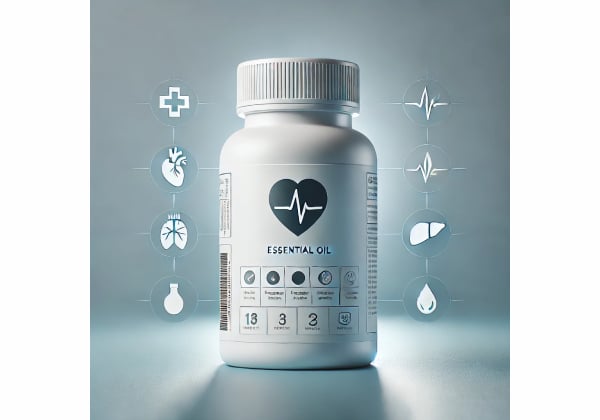
Kunzea essential oil, distilled mainly from the Tasmanian shrub Kunzea ambigua, has a crisp, woody aroma and an emerging reputation for easing everyday aches, supporting skin comfort, and freshening the air. Its chemistry typically blends monoterpenes (such as α-pinene and 1,8-cineole) with oxygenated sesquiterpenes (including viridiflorol and globulol)—a profile that helps explain both its pleasant scent and its functional properties. In practice, Kunzea shows most promise when used topically for localized discomfort or as an inhaled aroma for short, calming sessions. Evidence in humans is still limited, so expectations should be measured and use should remain conservative, especially for people with sensitive skin or underlying conditions. This guide offers a clear, practical walkthrough: what Kunzea is and how it works, where the science stands, how to dilute and apply it safely, who should avoid it, and how to buy quality oil without confusion about names, species, or exaggerated claims.
Key Facts
- May help with mild muscular and joint discomfort and assist skin comfort when diluted and used topically.
- Evidence is promising but modest; human data are limited and do not support disease-level claims.
- Typical adult topical dilution is 1%–3% (10–30 mg/mL); diffusion often uses 3–5 drops per 100 mL water.
- Avoid in pregnancy and breastfeeding, and avoid if you have severe asthma or fragrance allergies.
- Choose products labeled “Kunzea ambigua” with lot-specific testing to reduce adulteration risk.
Table of Contents
- What is Kunzea and does it work?
- Benefits: the evidence and its limits
- How to use it day to day
- Dosage, dilution, and practical recipes
- Side effects, interactions, and who should avoid
- Quality, sourcing, and legal status
What is Kunzea and does it work?
Kunzea essential oil is steam distilled from the leaves and twigs of Kunzea ambigua, a myrtle-family shrub native to south-eastern Australia and Tasmania. In the bottle, Kunzea tends to smell fresh, piney, and slightly camphoraceous, with a clean after-note that makes it versatile in blends. Chemically, batches often center on α-pinene and 1,8-cineole (the “eucalyptus”-like molecule), with meaningful amounts of terpinen-4-ol, bicyclogermacrene, viridiflorol, globulol, and ledol. This mix is not fixed; it shifts with season, harvest height, and growing conditions. Understanding that variability matters because composition drives both aroma and function.
How might it “work”? Most of Kunzea’s actions are inferred from its dominant constituents and from preclinical observations on the complete oil. Monoterpenes like α-pinene and 1,8-cineole have documented airway, antimicrobial, and soothing properties in experimental settings. Oxygenated sesquiterpenes such as viridiflorol and globulol are often discussed for their calming scent profile and potential skin-soothing support. In plantation studies, harvest timing and coppicing depth influence both yield and the relative abundance of these constituents, which can be leveraged by growers to tune the oil’s profile for specific applications.
In people, Kunzea is best thought of as a supportive, non-curative tool. Topical use may help with day-to-day muscular aches after activity, minor joint discomfort, or feelings of skin reactivity from weather or exercise. Inhalation can be used for short sessions of aromatic calm or to freshen indoor air. At present, evidence does not justify using Kunzea to treat medical conditions in place of established care. Instead, it fits into a wellness routine as a diluted topical, occasional diffuser oil, or addition to recovery rituals—provided that safety guidance is followed and expectations remain realistic.
Finally, a note on names: Kunzea ambigua oil is sometimes conflated online with kānuka (Kunzea ericoides) from New Zealand or with broader “Australian bush” oils. These are related but not identical. For accuracy and safety, confirm the Latin binomial on any label you buy and aim for suppliers who disclose batch-level testing.
Benefits: the evidence and its limits
When you evaluate essential oils, it helps to separate three layers of information: (1) what growers and analysts observe about the oil’s chemistry, (2) what lab and animal studies suggest about potential actions, and (3) what clinical trials in humans actually show. For Kunzea, the first two layers are growing, while the third remains modest.
Composition and consistency. Field and post-harvest research on Kunzea ambigua shows that both yield and chemical profile depend on how and when plants are cut. Shallow coppicing (leaving more above-ground biomass) and autumn harvesting can raise overall oil yield and skew the profile toward constituents people often want—such as 1,8-cineole and viridiflorol. This matters for buyers and clinicians: a bottle with higher cineole may emphasize respiratory freshness and a mild, clearing feel in blends, whereas a batch richer in oxygenated sesquiterpenes may feel more grounding and skin-soothing.
Skin and inflammation. In clinical dermatology, essential oils are not first-line therapy, but they can play a supportive role in mild presentations when used appropriately. A controlled trial of topical formulations containing 20% Kunzea oil in patients with mild to moderate psoriasis found that both the Kunzea-containing arm and the control (a comparable base without Kunzea) improved over eight weeks, with no added benefit from the Kunzea component. The takeaway is not that Kunzea is useless but that it is not a stand-alone treatment for inflammatory dermatoses. In day-to-day use, you would apply dilute Kunzea in supportive skin routines—after patch testing—and keep expectations to comfort and sensory relief rather than disease control.
Musculoskeletal relief. Anecdotal reports from bodyworkers and users often highlight Kunzea in post-exercise balms and massage blends for localized soreness. From a mechanism standpoint, this makes sense: α-pinene, 1,8-cineole, and terpinen-4-ol are common to many “soothing” oils and have shown anti-inflammatory or analgesic signals in experimental models. Still, human data specific to Kunzea for pain are limited. If you try it, frame your goal narrowly—e.g., easing the sense of tension in a calf muscle after a long run—rather than expecting treatment-level effects.
Respiratory and air freshness. With its cineole and pinene content, Kunzea diffuses nicely for a fresh, clearing aroma. Aromatic use can be helpful during seasonal changes or after indoor time when the air feels stale. Keep sessions brief (10–20 minutes), ventilate the room, and avoid if anyone present has reactive airways.
Antimicrobial context. Many essential oils show antimicrobial effects in vitro. Those observations can be useful for product formulation, but they do not translate directly to clinical outcomes on skin or in the air. In practical household terms, Kunzea can be a pleasant addition to a soap or surface spray recipe, but it is not a substitute for handwashing, standard cleaners, or proper disinfection where required.
Bottom line. Kunzea’s best-supported uses today are modest: localized comfort, pleasant aromatic lift, and adjunctive skin routines for people who tolerate essential oils. Strong medical claims are not warranted. If you value scent-driven rituals and careful topical self-care, Kunzea can be a good option—used judiciously and with attention to dilution and patch testing.
How to use it day to day
The safest, most effective ways to use Kunzea are simple: dilute for skin, diffuse for scent, and blend thoughtfully with compatible oils. The details below reflect common aromatherapy practice and consumer safety norms.
Topical (diluted) for localized comfort.
For adults without skin conditions, start at 1%–2% dilution in a neutral carrier (10–20 mg/mL; roughly 3–6 drops per 10 mL carrier, assuming 20 drops ≈ 1 mL). Massage a pea-sized amount into the target area (e.g., forearm, calf, or shoulder) once daily for 3–5 days, then pause and assess. For occasional stubborn areas, a short trial at 3% may be reasonable if you tolerated 2% well. Higher concentrations seldom add value and raise irritation risk.
Aromatic diffusion for a freshening boost.
Add 3–5 drops per 100 mL of water in an ultrasonic diffuser for 10–20 minutes in a ventilated room, then take a break. Use shorter sessions if children or pets are present and ensure an open door so they can leave the space. Avoid continuous diffusion.
Steamy shower method.
Place 1–2 drops on a washcloth at the edge of the shower away from direct water flow. The rising steam volatilizes the scent without prolonged exposure. This is gentler than direct inhalation.
Spot skincare support (post-activity or weather).
Blend 1% Kunzea with barrier-supportive carriers (e.g., jojoba, squalane) and apply a tiny amount to areas that feel wind-chafed or reactive after exercise. Do not use on broken skin. Discontinue if redness or tingling occurs.
Blend ideas (by function).
- Post-exercise balm: Kunzea 2%, lavender 1%, in a medium-weight carrier.
- Clear and bright diffuser: Kunzea 2 drops, lemon 2, cedarwood 1 per 100 mL.
- Evening wind-down: Kunzea 1 drop with 2–3 drops of gentle florals (e.g., Roman chamomile) in a diffuser for 10 minutes.
What to avoid.
Do not apply Kunzea neat (undiluted). Do not ingest essential oils. Avoid mucous membranes and the eye area. Do not apply under occlusion (e.g., bandages) unless advised by a professional. Do not use around infants, and practice extra caution around older children, pregnant people, and pets.
Tracking your response.
Give any new routine 7–10 days with consistent, low-risk use. If you notice fewer episodes of localized discomfort after activity or you find the scent routine helps you settle in the evening, that is a successful outcome. If there is no benefit or you experience irritation, stop and reassess.
Dosage, dilution, and practical recipes
Essential-oil “dosage” is best expressed as percent dilution in a carrier for topical use and drops per water volume for diffusion. Precision matters: small changes in concentration can meaningfully affect skin tolerance.
Adult topical guidance (healthy, non-pregnant).
- Everyday use: 1%–2% (10–20 mg/mL; ~3–6 drops per 10 mL carrier).
- Short trial for stubborn spots: 3% (30 mg/mL; ~9 drops per 10 mL) if lower dilutions are well tolerated.
- Maximum for very short, localized use: 5% (50 mg/mL; ~15 drops per 10 mL) for 1–3 days, then step back to 2% or discontinue. Use this only if you have no irritation history and you patch-tested first.
Sensitive skin, older adults, or those new to essential oils.
- Start at 0.5%–1% (5–10 mg/mL; ~1–3 drops per 10 mL).
- Increase slowly if fully tolerated after 7 days.
Patch test protocol (48–72 hours).
- Mix your intended dilution.
- Apply a coin-sized amount to the inner forearm once daily for 2–3 days.
- Watch for persistent redness, itching, or stinging. If any occur, discontinue.
Diffusion and inhalation.
- Ultrasonic diffuser: 3–5 drops per 100 mL water, 10–20 minutes per session.
- Personal inhaler stick: 5–10 drops on the wick; inhale 1–2 breaths as needed, up to 3 times daily.
- Steam tent: Not recommended for people with asthma or reactive airways.
Simple, evidence-informed recipes (measured and conservative).
- Recovery Rub (2%): 10 mL jojoba + 6 drops Kunzea. Apply a pea-sized amount to one small area after activity, once daily for up to 7 days.
- Evening Shoulder Oil (1.5%): 20 mL fractionated coconut oil + 6 drops Kunzea + optional 2 drops lavender. Massage briefly into shoulders before bed.
- Fresh Air Diffuser (per 100 mL): 2 drops Kunzea + 2 drops lemon + 1 drop cedarwood. Run 15 minutes in a ventilated room.
Units and conversions.
- 20 drops ≈ 1 mL for thin essential oils (room-temperature estimate).
- 1% dilution = 10 mg/mL essential oil in carrier (approximately 0.3 mL EO in 30 mL carrier).
Duration and breaks.
- For topical routines, use up to 2 weeks, then take a 1-week break.
- For diffusion, favor short sessions over long continuous use.
Children and special populations.
- Avoid topical use in children under 6 years unless directed by a clinician experienced in pediatric aromatherapy.
- Avoid diffusion around infants; for older children, keep sessions very short and the room ventilated.
- Do not use during pregnancy or while breastfeeding due to insufficient safety data.
Side effects, interactions, and who should avoid
Essential oils are concentrated volatile compounds; sensible precautions turn a pleasant experience into a safe one.
Common, usually mild effects
- Skin: transient warmth or redness if over-concentrated; dryness with frequent use.
- Aroma exposure: temporary throat catch, mild headache, or dizziness in poorly ventilated rooms.
Less common, more concerning
- Allergic contact dermatitis: delayed redness or itch hours after application. Stop use and avoid re-exposure; speak to a clinician if symptoms persist.
- Exacerbation of reactive airways: wheeze or chest tightness during diffusion; discontinue at once and ventilate.
- Eye and mucous membrane irritation: caused by accidental transfer; rinse copiously with clean water and seek care if persistent.
Who should avoid Kunzea
- Pregnancy and breastfeeding: lack of robust safety data—avoid.
- Infants and toddlers: avoid topical use and diffusion in their spaces.
- People with severe asthma, chronic cough, or fragrance sensitivity: diffusion may aggravate symptoms.
- History of essential-oil reactions or strong atopy: consult a clinician first; patch test if cleared.
- Concurrent dermatoses under active treatment: coordinate with your dermatologist to avoid interactions with medicated topicals.
Drug and condition considerations
- Topical medications (steroids, calcineurin inhibitors): separate applications by at least 2–3 hours and keep essential-oil dilutions at or below 1% on treated areas.
- Anticoagulant therapy or bleeding disorders: while no specific Kunzea-related bleeding risk is established, keep dilutions conservative and avoid use on broken skin.
- Photosensitivity: Kunzea is not a phototoxic citrus oil, but blends may include photosensitizers. Check every ingredient.
Good-practice rules
- Respect dilution and duration limits.
- Avoid ingestion and neat application.
- Keep bottles tightly closed and stored cool, dark, and upright to maintain quality and reduce oxidation (which raises irritation risk).
- Label homemade blends with date, ingredients, and dilution; discard after 6 months (or sooner if the scent changes sharply).
When to seek medical attention
- Spreading rash, swelling of lips or face, wheeze, faintness, or persistent chest symptoms.
- Eye exposure that does not calm after thorough rinsing.
- Any new or worsening skin condition while using essential oils.
Quality, sourcing, and legal status
Buying quality Kunzea is easier when you know what to look for and how to read labels. Because composition varies, transparency from producers is essential.
What the label should show
- Latin name: Kunzea ambigua.
- Plant part and method: leaves and twigs; steam distilled.
- Country or region of origin: ideally a specific region (e.g., North-East Tasmania).
- Batch/lot number and GC-MS summary: a chemistry snapshot with major compounds (e.g., α-pinene %, 1,8-cineole %, viridiflorol %).
- Bottling date or best-by: fresher oil is less oxidized and typically more skin-friendly.
Red flags
- Vague names (“Australian bush oil”) or only “Kunzea” without the species.
- No batch testing, no lot number, or generic claims without data.
- Aggressive medical promises (“treats arthritis,” “cures psoriasis”).
- Unusually low prices for large sizes; essential oils are costly to produce well.
Storage and shelf life
- Keep at 15–25°C, away from light and moisture.
- Once opened, plan to use a 10 mL bottle within 12 months. Discard earlier if the aroma becomes harsh or resinous—signs of oxidation.
Legal landscape (illustrative)
- In Australia, Kunzea ambigua oil appears on the national register for listed medicines, and individual Kunzea products can be listed in the Australian Register of Therapeutic Goods (ARTG) for specified topical indications when manufacturers meet quality and labeling standards. This does not mean every Kunzea bottle is a medicine; it means specific, listed products have met the regulator’s criteria for lower-risk claims and quality controls.
- Elsewhere, Kunzea is typically sold as a cosmetic or aromatherapy oil without therapeutic claims. Always follow local regulations on labeling, advertising, and safe use.
Sustainable sourcing
- Plantation practices (coppicing height, harvest season) influence both yield and chemistry. Producers who share cultivation and harvest details demonstrate stewardship and help explain year-to-year aroma differences. Asking for sustainable harvest information is reasonable and welcomed by reputable distillers.
Making a confident purchase
- Choose a supplier that provides full botanical identity and batch GC-MS.
- Start with a small bottle (5–10 mL) to gauge tolerance and aroma preference.
- Keep your first blend simple—single-oil trials at 1%–2% tell you more than complex mixes.
- Track your experience for a week or two, then decide whether Kunzea earns a spot in your routine.
References
- The Effect of the Height of Coppicing and Harvest Season on the Yield and Quality of the Essential Oil of Kunzea ambigua 2022 (Open Access, Composition and Yield)
- Safety and efficacy of kunzea oil-containing formulations for the management of psoriasis: a randomized, controlled trial 2015 (RCT)
- The Therapeutic Potential of Essential Oils in Managing Inflammatory Skin Conditions: A Scoping Review 2024 (Scoping Review)
- Therapeutic Potential of α- and β-Pinene: A Miracle Gift of Nature 2019 (Constituent Review)
- DUCANE KUNZEA OIL (372260) | Therapeutic Goods Administration (TGA) 2021 (Regulatory Listing)
Disclaimer
This guide is informational and does not replace personalized medical advice, diagnosis, or treatment. Essential oils can irritate skin or airways and may interact with medications or topical therapies. Do not ingest Kunzea essential oil. Avoid use in pregnancy and breastfeeding, in infants, and in anyone with fragrance sensitivities or severe asthma. If you have a medical condition or take prescription drugs, consult a qualified healthcare professional before using any essential oil. If irritation, wheeze, or other adverse effects occur, stop immediately and seek medical care.
If this article helped you, we would appreciate your support—please consider sharing it on Facebook, X (formerly Twitter), or your favorite platform, and follow us for more evidence-based guides.










